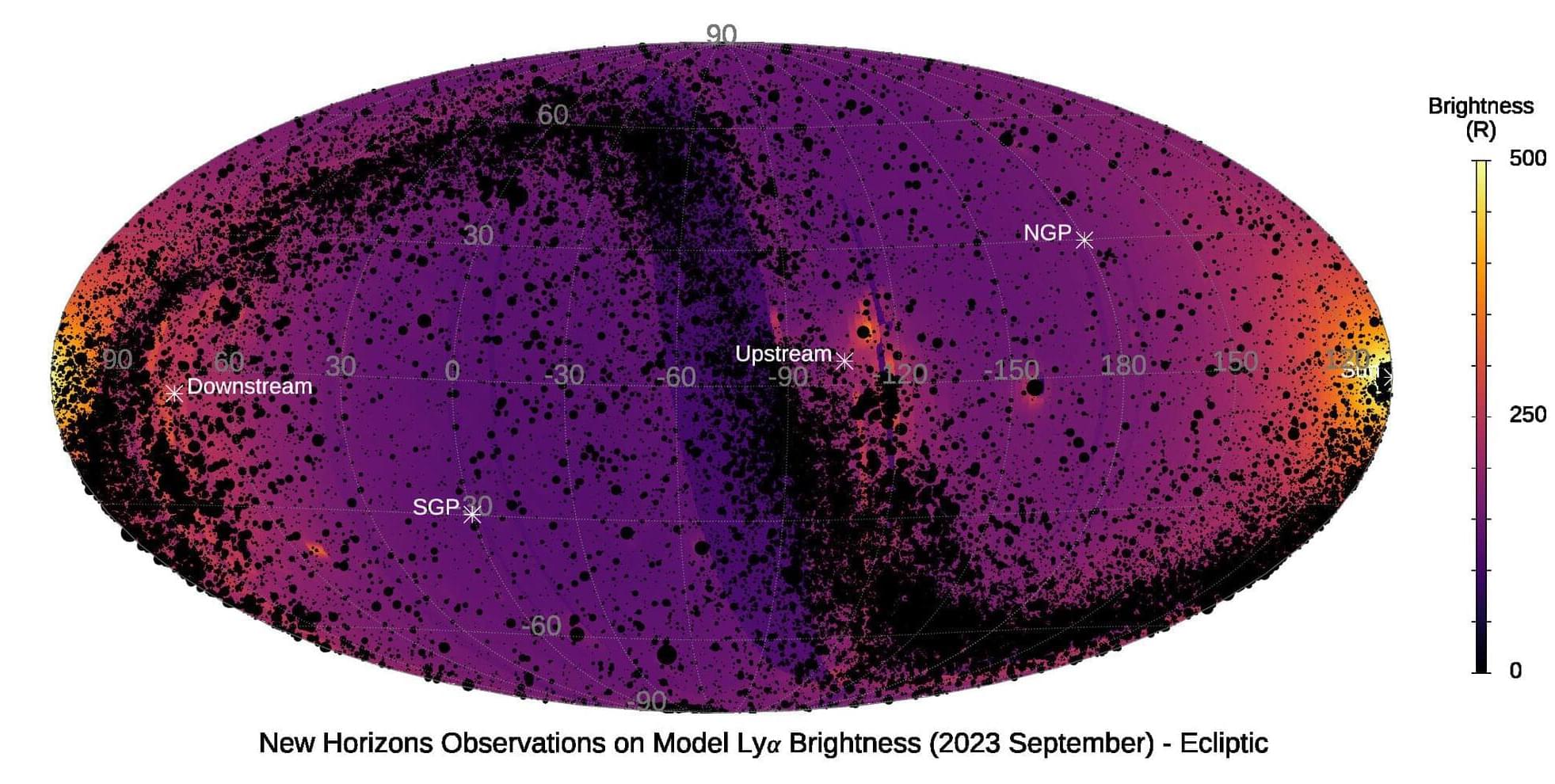The NASA New Horizons spacecraft’s extensive observations of Lyman-alpha emissions have resulted in the first-ever map from the galaxy at this important ultraviolet wavelength, providing a new look at the galactic region surrounding our solar system. The findings are described in a new study authored by the SwRI-led New Horizons team.
The newly published research paper detailing the observations and their interpretation, “The Lyman-alpha Sky as Observed by New Horizons at 57 AU,” by R.G. Gladstone and co-authors appears in The Astronomical Journal.
“Understanding the Lyman-alpha background helps shed light on nearby galactic structures and processes,” said SwRI’s Dr. Randy Gladstone, the study’s lead investigator and first author of the publication. “This research suggests that hot interstellar gas bubbles like the one our solar system is embedded within may actually be regions of enhanced hydrogen gas emissions at a wavelength called Lyman alpha.”
